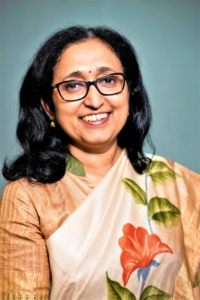
Crohn’s disease incidence is rising in India, where the burden is second only to the United States.
Support from Helmsley’s Crohn’s Disease Program to the Asian Healthcare Foundation (AHF) aims to improve access to diagnostics for Crohn’s disease patients who are uninsured or living below the poverty line in Southern India. AHF is the research and training wing of Hyderabad’s Asian Institute of Gastroenterology (AIG), the largest gastroenterology hospital in the world, serving 10,000 patients daily. Dr. Rupa Banerjee, a top gastroenterologist in India, will lead this project to identify best practices and guidelines for Crohn’s disease care there.
Pretima Persad, Program Officer, asks Dr. Rupa Banerjee three key questions about how this effort will improve patients’ lives.
Dr. Rupa Banerjee: There are many, as over the last two decades there has been an increasing incidence of inflammatory bowel disease (IBD) in India.
Early, timely diagnosis of Crohn’s disease is one of the biggest challenges. But in India, where infectious disease is predominant, there are limitations to diagnosing Crohn’s disease. Southern India has a high prevalence of intestinal tuberculosis (ITB). There is often a diagnostic dilemma between ITB and Crohn’s disease, and an anti-tubercular therapy is commonly given before Crohn’s disease diagnosis is confirmed.
Moreover, public funding is focused primarily on infectious diseases. There is limited access to healthcare facilities, poor physician and patient awareness of the disease, and diagnostic dilemmas. Crohn’s disease symptoms may be mild and non-specific for many years. Often patients resort to multiple courses of antibiotics before a colonoscopy and further evaluation. The combination of these factors results in delays, with more than 50% of cases diagnosed over a year after symptoms are first reported.
Access, availability and affordability of diagnostic facilities continues to be restricted, particularly among the 20% of patients in India who have a BPL (below poverty line) card from the government. Colonoscopy and abdominal ultrasound remain unavailable to a large population of patients symptomatic with diarrhea, unintentional weight loss, chronic abdominal pain, and unexplained anemia.
As Crohn’s disease emerges in India, the public health care systems struggle to provide timely diagnostic facilities for a large population. Delayed diagnosis and treatment is associated with significantly higher complications and need for surgery in patients. There is an urgent need for early diagnosis to ensure timely, appropriate treatment, and better outcomes.
 Tell us about your role as a gastroenterologist & the Director of the IBD Center at AIG.
Tell us about your role as a gastroenterologist & the Director of the IBD Center at AIG.Dr. Rupa Banerjee: When I helped establish the IBD Center at AIG in 2004, the goal was to improve quality of life for thousands of patients without putting a hole in their pockets. My role has evolved since then, from being a clinician trying to provide the best possible care, to leading an integrated multi-disciplinary team carrying out research as well, all while spreading IBD awareness extensively within the patient community.
‘Patients first’ has always been at the core of everything we do. Starting from a very humble beginning, AIG hospitals have come a long way, now performing over 65,000 endoscopic procedures in a year. Today we also maintain a 6,000-patient database and biorepository. Our research is primarily on IBD in the region, focusing on the epidemiology, microbiota, & genetic profile, and evaluation of low-cost therapies.
We initiated the IBD Emerging Nations Consortium which includes 16 countries from South Asia and the Middle East to promote collaboration in this part of the world. We organize the AIG IBD Summit, an exclusive bi-annual IBD meeting with over 1,000 delegates from India and South Asian countries.
Dr. Rupa Banerjee: This grant will help us provide access to care for those living in poverty, and those who are uninsured.
Incidence of Crohn’s disease is on the rise in Southern India, and we feel that the number of diagnosed cases only represents the tip of the iceberg. Many symptomatic patients are unable to afford diagnostic tests and have limited access to specialists. The pain and suffering from Crohn’s often goes unchecked and unnoticed. The disease burden involves both economic and educational limitations. In India alone, we have over 600 million people living in rural places where access to quality healthcare remains a challenge.
This project aims to screen symptomatic patients with suspected Crohn’s disease and IBD with a basic blood test, abdominal ultrasound and colonoscopy or ileoscopy, to facilitate early diagnosis of and treatment. The screening will be free of cost to patients living below the poverty line or those who are uninsured by the government. This screening would ensure early diagnosis and better health outcomes. The results of this screening would provide valuable data on the causes of diarrhea in the region.
Additionally, all phenotypic data of the newly diagnosed Crohn’s disease patients will be recorded in our registry, and bio-specimens including blood, stool, and tissue will be collected and stored in the biorepository.
Crohn’s is an emerging disease in India. While we don’t know the exact causes, the primary contributing factors are genetic, microbial and environmental. Bio-specimens of newly diagnosed patients will offer crucial data to uncover more about these key factors for the development of Crohn’s disease in the developing world.